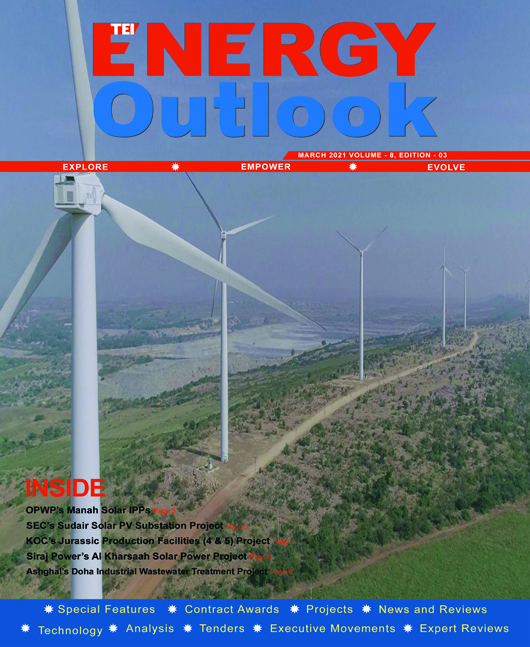
Wind Power Upswing in India
The Covid-19 impact and oil price volatility has led to a steady increase of the renewable energy share in the power supply mix worldwide.
The upward trend is set to continue. According to a report by the International Energy Agency, India is expected to be the largest contributor to the renewables growth in 2021, with the country’s annual additions almost doubling from 2020. A large number of auctioned wind and solar PV projects are expected to become operational this year following delays due to Covid-19.
India’s wind power installed capacity has grown by 1.8 times during past 6.5 years to about 38.26 GW. The government has set an ambitious target of installing 175 GW of renewable energy capacity by 2022 and 450 GW by 2030, of which 60 GW by 2022 and 140 GW by 2030 would come from wind energy.
The Indian government has granted developers a five-month extension to commission renewable energy projects that suffered construction delays due to the pandemic. States and regulatory bodies have made several policy and regulatory changes to ensure a strong recovery in 2021.
The Ministry of New and Renewable Energy (MNRE) issued a detailed proposal for developing wind parks and wind-solar hybrid parks. It said it had identified potential sites for wind and wind-solar hybrid projects with the help of the National Institute of Wind Energy in Tamil Nadu, Andhra Pradesh, Karnataka, Gujarat, Rajasthan, Madhya Pradesh, and Telangana.
The MNRE also issued guidelines for a tariff-based competitive bidding process for procuring power from 2.5 GW of the interstate transmission system (ISTS) connected wind projects blended with solar power. It mandates 80% of the total contracted capacity to come from wind projects.
Gujarat amended its new land policy for wind, solar, and wind/solar hybrid power projects. The amendments said that 50% of the electric capacity is to be installed within three years of the agreement of land allotment, and 100% should be generated within five years of the contract.
The Gujarat Electricity Regulatory Commission also removed generic tariff for wind projects in the state. The Commission said it decided to consider the competitive bidding approach to reduce the cost of regulation and give investors sufficient clarity. The new control period of the tariff framework will be effective from April 30, 2020, to March 31, 2022.
The MNRE issued tariff-based competitive bidding guidelines for power procurement from grid-connected solar-wind hybrid projects. The guidelines stated that the SECI would be the nodal agency and the projects will be cancelled if SECI cannot enter into a power sale agreement (PSA) to sell the power from these projects awarded within six months from the date the letter of award is issued.
The sector has massive target to meet, while the penetration of wind power will still largely depend on the efficacy of the relevant policies and regulations. The stakeholders opine that though 2020 was challenging, the industry will quickly come back on track.
Editor